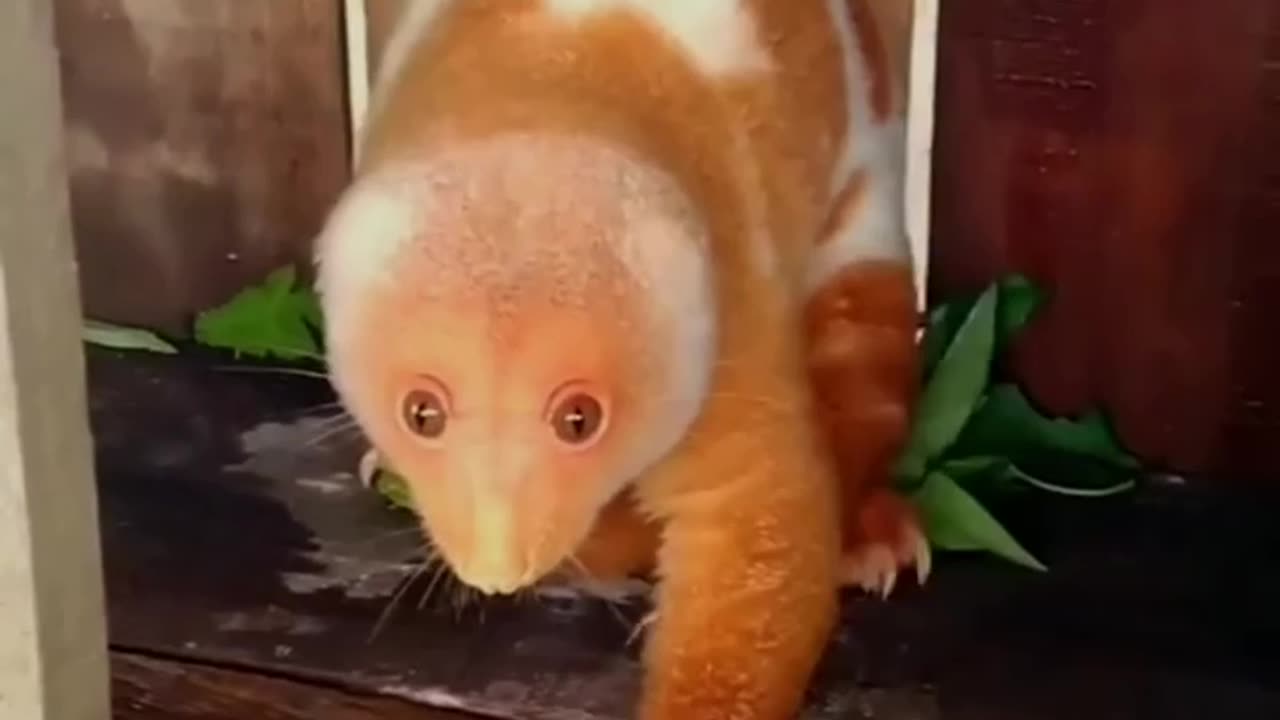Premium Only Content

THE SPOTTED CUSCUS
The common spotted cuscus (Spilocuscus maculatus), also known as the white cuscus, is a cuscus, a marsupial that lives in the Cape York region of Australia, New Guinea, and nearby smaller islands. It is known as aklang or gabi in the Kalam language of Papua New Guinea.
The common spotted cuscus is about the size of a common house cat, weighing 1.5 to 6 kilograms (3.3 to 13.2 lb), body size about 35 to 65 centimetres (14 to 26 in) long, and a tail 32 to 60 centimetres (13 to 24 in) long. It has a round head, small hidden ears, thick fur, and a prehensile tail to aid in climbing.
Its eyes range in colour from yellows and oranges to reds, and are slit much like a snake's. All four of its limbs have five digits and strong, curved claws, except the first digit on each foot. The second and third digits of the hind foot are partly syndactylous: they are united by skin at the top joint, but divide at the claws.
These smaller claws can serve as hair combs when cleaning. The first and second digits of the fore foot are opposable to the other three, helping it grip branches while climbing. The undersides of its paws are bare and striated, which also help it grasp trees and food. The first digit on the hind foot is clawless and opposable.
It has thick, woolly fur of varying colors depending on age, sex, and location. Males are typically grey/white or brown/white with splotchy patterns on their back and a white underbelly. Only males have spots.
Females are usually white or grey and unspotted. Some completely white individuals are known in both males and females. As the young grow, they go through a series of color changes before reaching sexual maturity around one year old. Colouration varies from reds and whites to buffs, browns, light greys, and blacks. Unlike some other species of cuscuses or possums, the common spotted cuscus does not have a dorsal stripe on its fur.
The curled, prehensile tail is a distinctive characteristic of the common spotted cuscus. The upper part of the tail closest to the body is covered in fur, while the lower half is covered in rough scales on the inside surface to grip branches.
-
 LIVE
LIVE
MissesMaam
6 hours agoFinishin' Red Dead Redemption 💚✨
1,224 watching -
 34:44
34:44
LFA TV
5 days agoMIRACLES DO HAPPEN!
62K1 -
 LIVE
LIVE
GamersErr0r
1 hour ago $0.36 earnedMooning My Community
153 watching -
 2:22:59
2:22:59
Banks Atkin Live
4 hours agoChilling playing Games & Vibin
40.1K1 -
 LIVE
LIVE
Dragoon_B
5 hours agoNothing crazy - just Counter Strike + Valorant
63 watching -
 18:03
18:03
Stephen Gardner
5 hours ago🔥YES!! Trump GETS HUGE win in 4th district court!!
60.2K360 -
 LIVE
LIVE
G3T
3 hours ago🔴GET | not saying it
89 watching -
 15:35
15:35
DeVory Darkins
10 hours ago $3.75 earnedGavin Newsom drops CRUSHING BLOW on Democrats
19.5K60 -
 LIVE
LIVE
Etheraeon
6 hours agoPUBG: Battlegrounds | Total Bot Domination
114 watching -
 DVR
DVR
House of Jacobs
3 hours agoElden Drinks - Drunk Souls Series
12.9K1